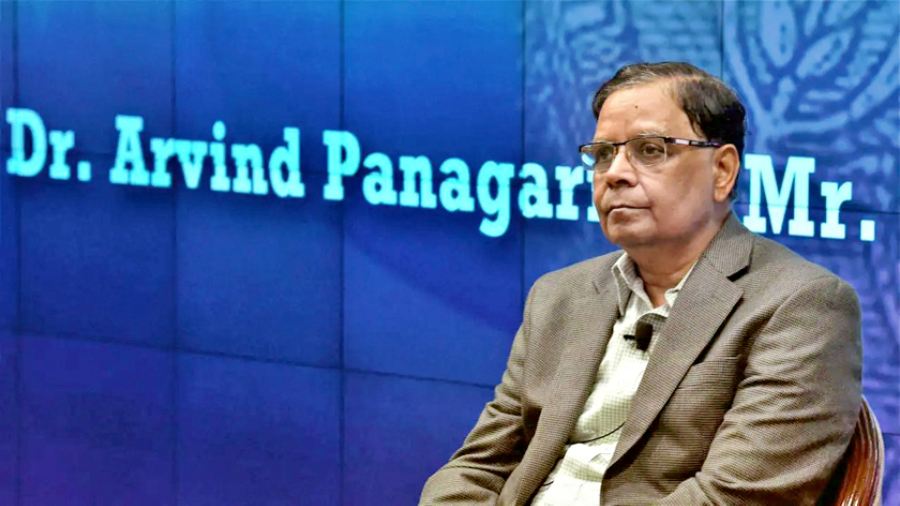Book: An Economist’s Quest for Reforms: The Vajpayee and Singh Years
Author: Arvind Panagariya
Publisher: HarperCollins
Price: ₹599
Arvind Panagariya is an ex-colleague. He was vice-chairman of Niti Aayog when I was a member there. He has written several books. He has often written on trade; in recent years, he has also written on reforms. Two books, in particular, stand out — Emerging Giant and Reclaiming the Lost Glory. In comparison, this is a lazy book. India has changed post-1991. Earlier, academics didn’t normally write for the popular press, regarding it to be beneath their dignity. Post-1991, many do, and that includes Panagariya. By definition, a newspaper column has a short shelf-life. Personally, I am against publishing newspaper columns in the form of a book. Several friends and acquaintances have opted for this lazy route. Why should one grudge Arvind that privilege? But it should be clear that one isn’t expecting a replication of the 2011 or 2020 volumes.
Let me quote from the Introduction: “This book brings together a selected set of my media articles, written between January 2000 and March 2014, principally for The Economic Times and The Times of India. These years approximately coincide with the tenures of Prime Ministers Atal Bihari Vajpayee and Manmohan Singh.” The qualification, “principally”, has been added because of the inclusion of articles from the Economic and Political Weekly, The Wall Street Journal and Business Standard. Despite the filtering (“selected set”), do these still retain some interest?
In the Introduction, Panagariya describes himself as a “reform advocate”, which is a fair description. “A pen-wielding reform warrior must fight on many fronts. First, he must write to persuade policymakers to the importance of reforms… Second, a reform advocate must also endeavour to convey the reform ideas to the… public… to mobilize support for them… Third, a reformist government is frequently under attack by anti-reform critics. At such times, the reform advocate must expose the falsehood of the critics’ arguments and explain the value of reforms to the wider readership… Finally, reform advocates must offer reform ideas and answer the critics of those reforms…These are some of the broad principles that have guided my policy writings, including those reproduced in this volume… In all, I have included sixty-two articles in the collection, dividing them into two volumes, one devoted to the Vajpayee era and the other to the Singh era. Because the former ruled for one term and the latter for two terms, the second volume contains twice as many articles as the first.”
Those principles for writing in newspapers are fine. I am less convinced about the utility of reprinting those 62 articles in the form of a book. The reader should be forewarned. There will be more. As is generally well-known, Arvind is an ardent supporter of Narendra Modi. “I wrote a handful of articles for the media, beginning in 2012, based on this research (about the performance of Gujarat under Narendra Modi)… The reader will notice that I have not included these articles in the present collection. Upon reflection, I concluded that even though the articles were written during the Singh era, they would better serve as a prelude to the Modi era. So, dear reader, stay tuned for the next collection of my articles.” Other than the laziness angle, the temptation to publish collections of columns as books probably stems from taking oneself and one’s popular writings too seriously.
Pre-1991, the Indian economy didn’t change for years. Newspaper columns possessed the attribute of being immortal since policies and circumstances didn’t change for decades. That shouldn’t be the case after 1991, more so, after May 2014. Why should one be interested in an open letter Arvind Panagariya wrote to Rahul Gandhi in November 2013? There are plenty of other issues that should interest the reader — Covid and its aftermath, the Modi government’s initiatives, prospects for growth, inflation and employment, the world scenario, the timeline for a $5 trillion economy.
So far as this book is concerned, the eye is on a rear-view mirror. The Introduction is really the best part of the volume. If you read the Introduction, you will get the gist of the argument. The rest of the book is not worth reading. That is my harsh view, with the conviction that Arvind is capable of doing better.











